Disney’s California Misadventure
Back in California, Disneyland had long been identified by then-CEO Michael Eisner as a candidate for expansion. Even forty years old, Walt’s “original magic kingdom” was still just a tiny, landlocked park and that gargantuan 100 acre parking lot. Plans for a never-built Possibilityland: WESTCOT would’ve expanded the resort tremendously, not only with a new theme park, but with all the infrastructure and transportation systems Walt had dreamed of: Peoplemover, Monorails, and more, all darting through the property.
When WESTCOT was canned due to the financial failure of Disneyland Paris, the plan changed. Disneyland would still get a new theme park built over its own blacktop parking lot… but now, it would need to be inexpensive, and it would need to provide a reason for guests to skip the rest of the Golden State and stay on property longer. Ta-da!
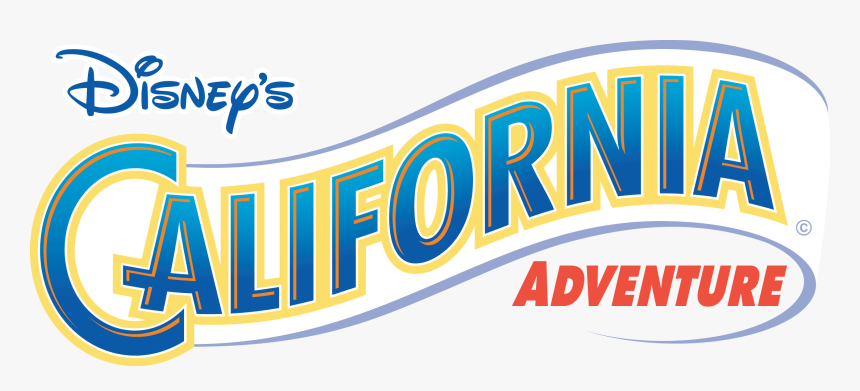
Disney’s California Adventure was set to debut in February 2001, with warnings spread far and wide that the new, cutting edge park would likely draw bumper-to-bumper traffic to the freshly-poured Mickey & Friends parking garage; that California Adventure would max out at its 33,000 guest capacity on most weekends; that the old Disneyland next door would practically be a ghost town as new international guests descended on the bright, shiny, new park that was “hip” and “edgy” with an “MTV attitude.”
The reality was a little different.
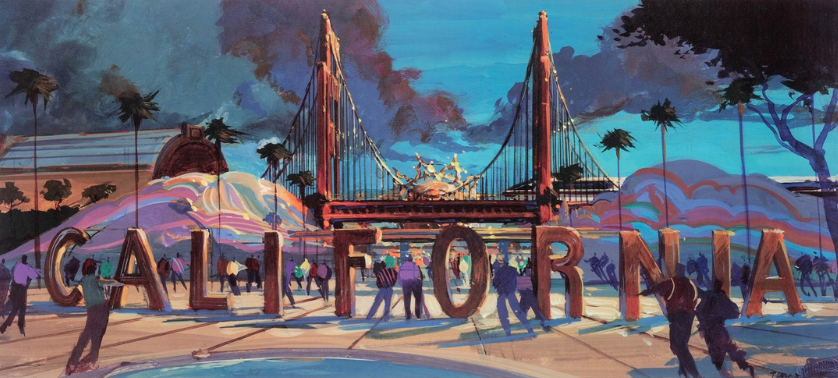
In 2001 – California Adventure’s worldwide debut year – about 5 million guests stepped through its post-modern postcard-stylized entry gates. That doesn’t sound bad at all, until you know that during the same period, more than 12 million visited that “old-fashioned” and “tired” Disneyland a hundred feet away.
But why? The answer to that question is its own in-depth feature here on Park Lore– one of our favorite stories we’ve told – the unsealed files of the Declassified Disaster: Disney’s California Adventure. But the short version is that California Adventure tried to be the opposite of Disneyland.
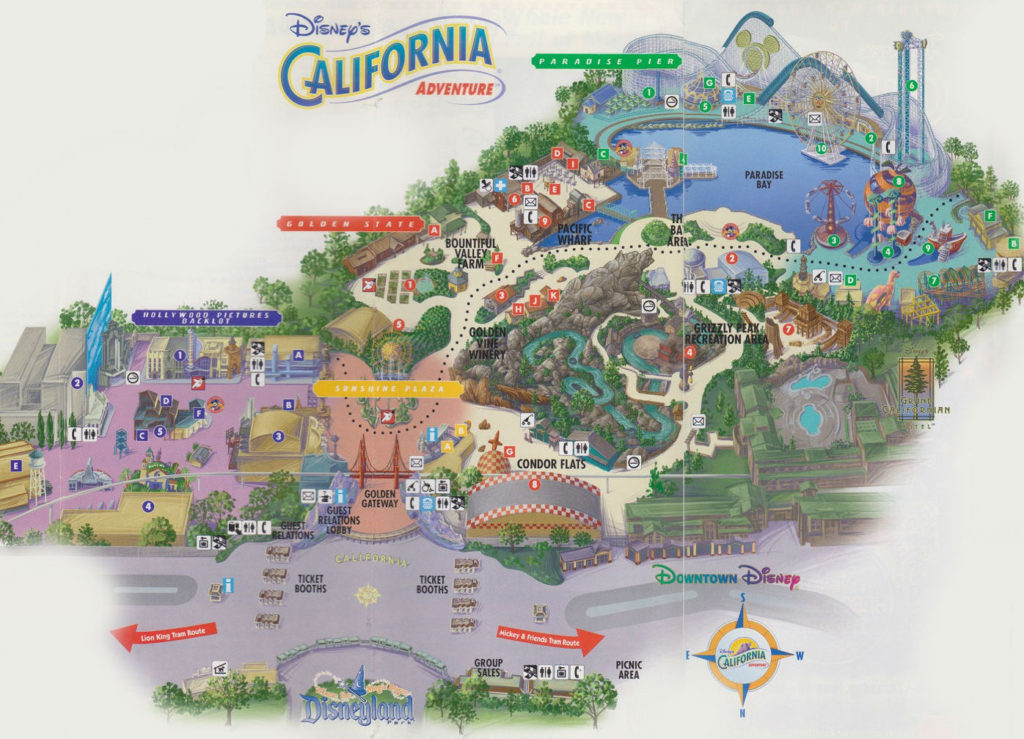
Suffice it to say that Disney’s California Adventure had some fatal flaws.
1. IT HAD PRACTICALLY NO RIDES. Its first three lands – Sunshine Plaza, Hollywood Pictures Backlot, and the Golden State – contained only three rides between them, ranging from the Declassified Disaster: Superstar Limo (sometimes called Disney’s worst ride ever) to the park’s single, soarin’ success, the Lost Legend: Soarin’ Over California.
2. IT WAS FILLED WITH CHEAP COP-OUTS. Its fourth (and final) land, Paradise Pier, contained six rides of its own, but except for the bare steel roller coaster, California Screamin’, each was an off-the-shelf carnival ride you’d expect at the very kind of seaside boardwalk Walt had built Disneyland as an alternative to.
3. IT HAD NOTHING FOR FAMILIES. With practically zero Disney characters, just one dark ride, and almost no family rides whatsoever, the park was intentionally positioned as a more adult alternative to Disneyland, emphasizing food, beer, and wine.

4. IT FORGOT WHAT MAKES DISNEY PARKS SPECIAL. Unlike Disneyland next door where guests would step into idealized, romanticized, immersive, and cinematic lands, California Adventure’s four lands were content being paper-thin spoofs of modern California. From its current-day thrill ride pier to its wide concrete Sunshine Plaza and the Hollywood Pictures Backlot lined with empty facades and punny shops born of the reality-TV fueled early 2000s. It was neither timeless or magical.
Given that California Adventure’s already-low attendance dropped a further 15% in its second year, executives had to realize that this problem was not going away. They quickly tried super-charging the park with brand new attractions like the family-focused “a bug’s land” and the headlining E-Ticket Lost Legend: The Twilight Zone Tower of Terror.
But behind the scenes, Imagineers were toying with a big fix to bring something new to the Californian park… an entirely new land that would celebrate California’s mid-century car culture – a whole land dedicated to cars. No, not Cars; cars.
Carland
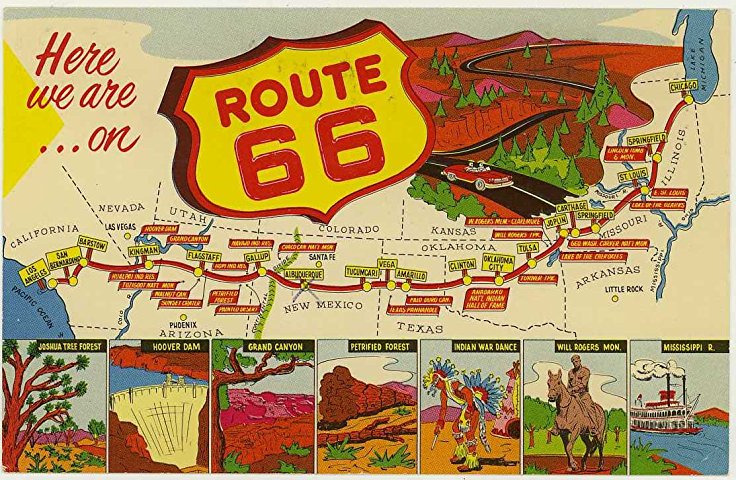
Though it may be hard to believe, Disney Imagineers were hard at word developing an entirely new themed land to be built on a last bit of parking lot remaining adjacent to the California Adventure site.
Now, Disney had erected tributes to the era of road trips before, like the massive “roadside attraction” style Gertie the Dinosaur stand resting in Echo Lake at the Disney-MGM Studios. California Adventure’s own Paradise Pier also featured a section seemingly dedicated to the sometimes-whacky wonders of the great American road trip, including a sunglasses shop inside a dinosaur of its own.
But of course, the history of America’s roadside attractions and their connection to that great American pastime of the family vacation was nearly endless, and there’s nothing more Californian than California car culture.
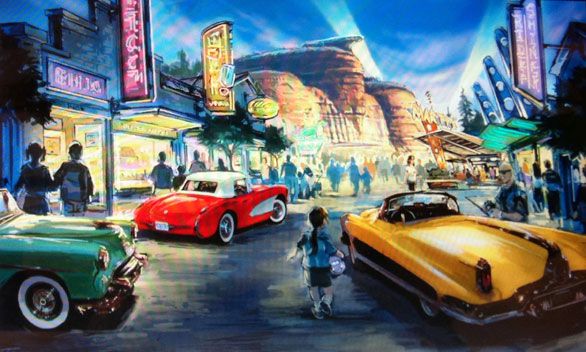
So inside of California Adventure, a new expansion deemed Carland would celebrate the Mother Road itself – Route 66; that 2,448 miles of opportunity; the “yellow brick road” to the West, long since bypassed by the Interstate.
Naturally, the land would highlight an imaginary Route 66 town brought to life with mid-century music, “drive-in” diners, and kitschy shops selling souvenirs and tchotchkes. A neon stretch of “Cruise Street” between 1955 and 1965, Carland would’ve been like stepping into a ’60s diner and being teleported into the past. It would also feature at least one new headlining ride.
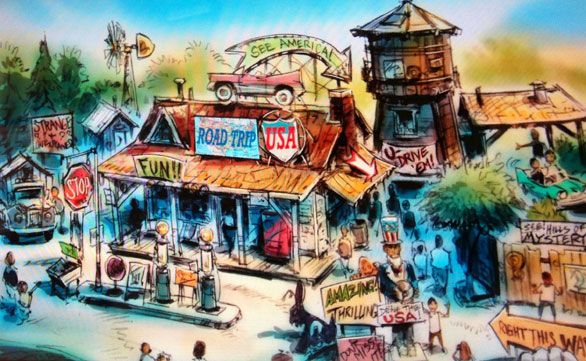
From what fans can gather, the main attraction in the land would’ve been Road Trip U.S.A. On board, guests would drive along a comical, post-card perspective Route 66 passing preposterous roadside attractions set in the desert mountains that enveloped the town.
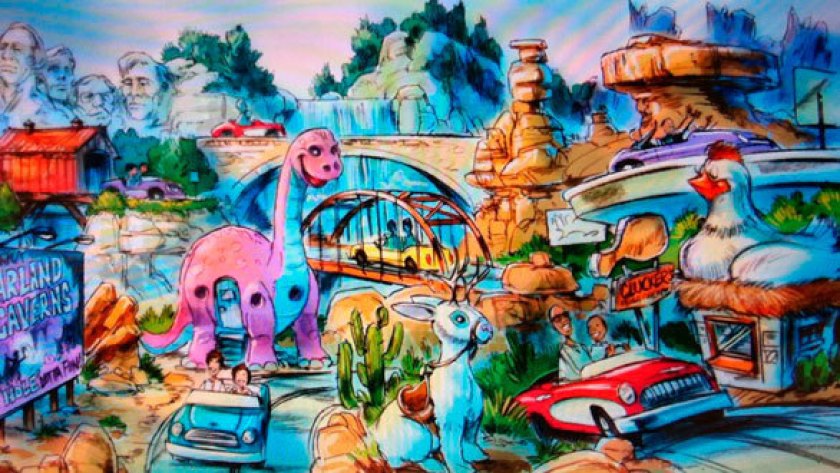
Chugging along highway ramps, rumbling over bridges, and swerving through the natural and manmade wonders of the West, Road Trip U.S.A. would’ve likely been a new take on Autopia; a drive-‘em-yourself family ride through the west to the tune of the Beach Boys, the Mamas and the Papas, and the road trip-ready playlists of the era.
Of course, they’d also sputter through a car wash, where onlooking guests could activate wind and water effects.

One particularly thoughtful moment would come when the cars would drive into the “Carland Caverns” set inside of the rocky backdrop to the land to explore glistening caverns clearly modeled after the Lost Legend: Mine Train Through Nature’s Wonderland that once chugged through Frontierland, with its iconic and beloved Rainbow Caverns scene – a testament to the nation’s roadside caves and cavern attractions.
As development of Carland progressed, it seems that Imagineers decided that, for the land to truly revitalize Disney’s California Adventure, its headliner would need to be a real draw. That seems to be why, later on in the land’s concept phase, the Autopia-style drive through exaggerated comic roadside attractions was reduced in scope…
Characters and cars
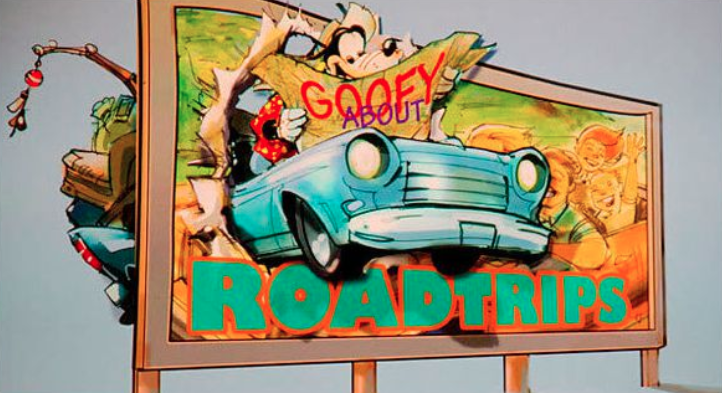
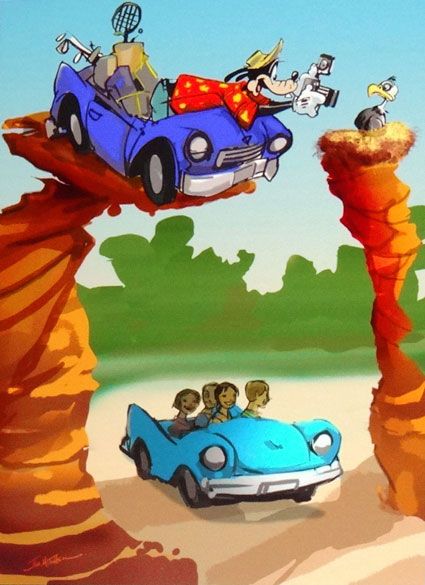
…and given a character overlay (since, if you can believe it, back then people criticized the park for being too much California and not enough Disney – quite the opposite of today) to become Goofy About Roadtrips.
Not only would that provide Carland with a family attraction with a Disney character attached; it would also connect to 1995’s A Goofy Movie, wherein Goofy and his son Max set off on a cross-country road trip to California.
And while the new Roadtrip ride would be annexed to its own family attraction, it was clear that California Adventure needed a hit; a major, anchor attraction that would draw guests into the still-underbuilt park and provide an experience like no other ride on the West Coast. That seems to be the point when the land’s anchoring ride became a full-on E-Ticket, bringing TEST TRACK’s technology to Anaheim in a new racing ride through the desert…
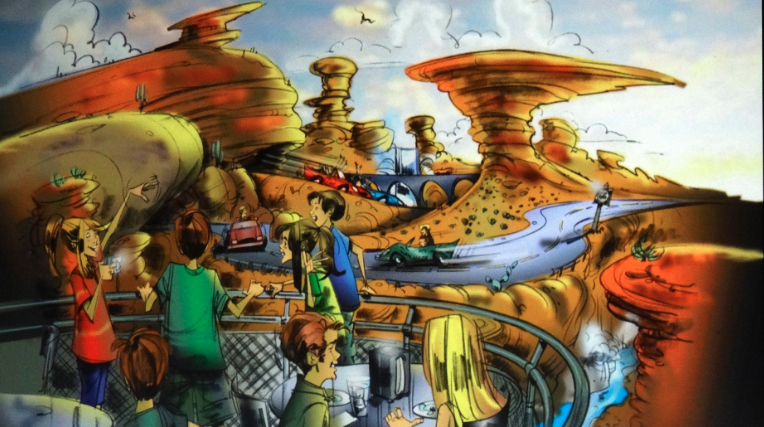
Looking more familiar?
Of course, Carland never came to be. At least, not in the form Imagineers originally envisioned… Why? We’ll dissect three major points that shifted the land’s focus forever on the next page, then head into California Adventure’s one-of-a-kind E-Ticket land to step aboard its anchoring attraction…



